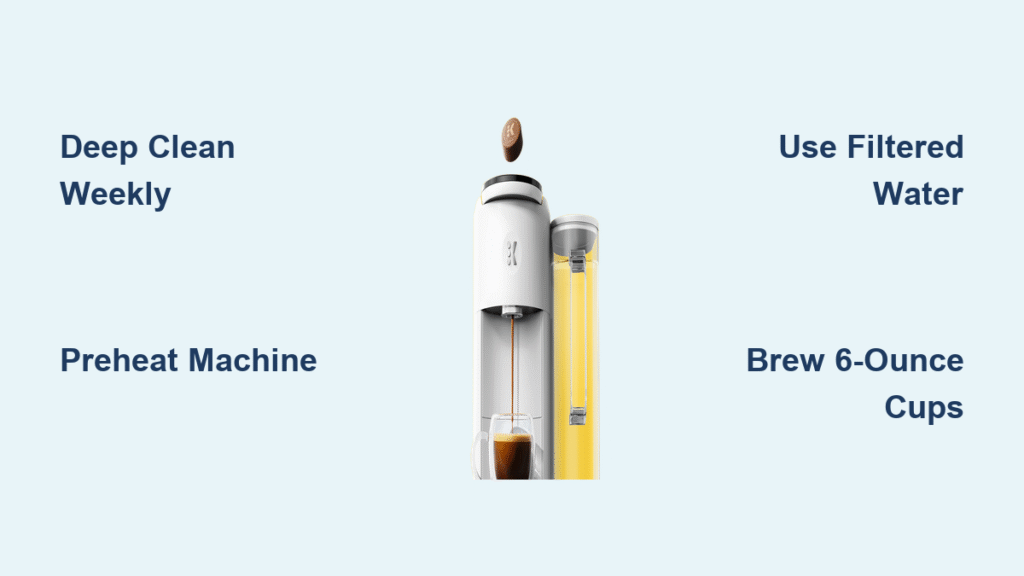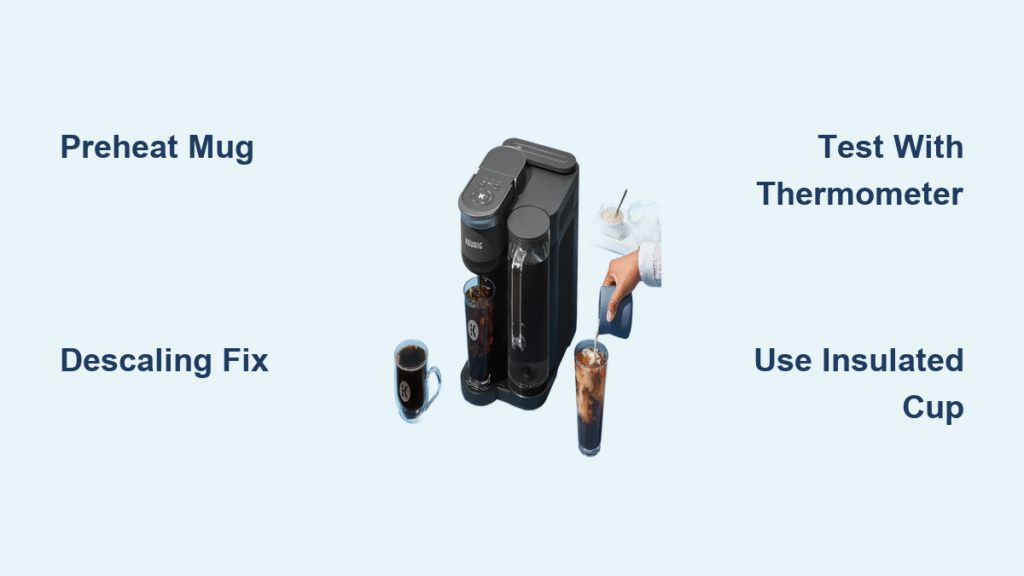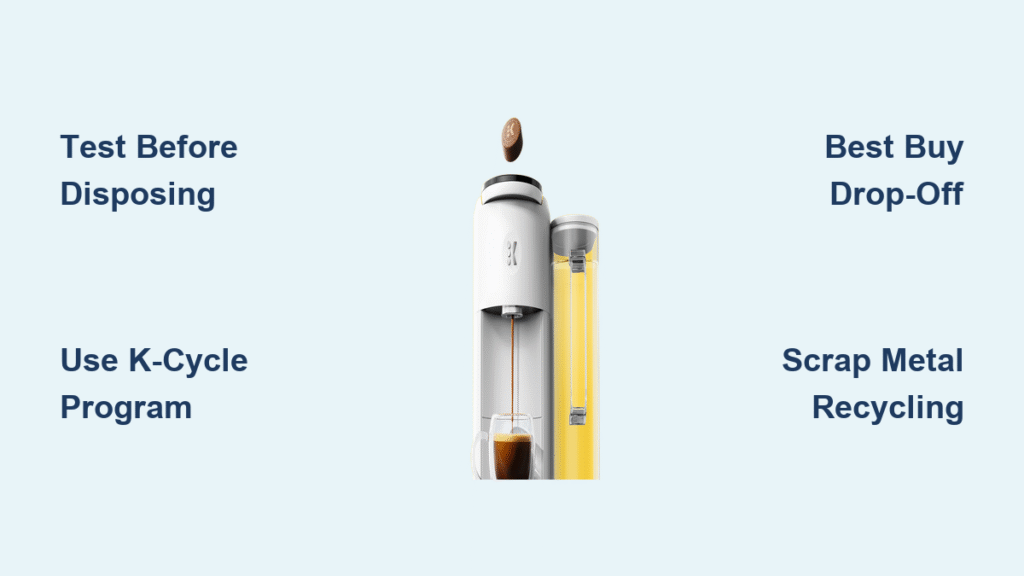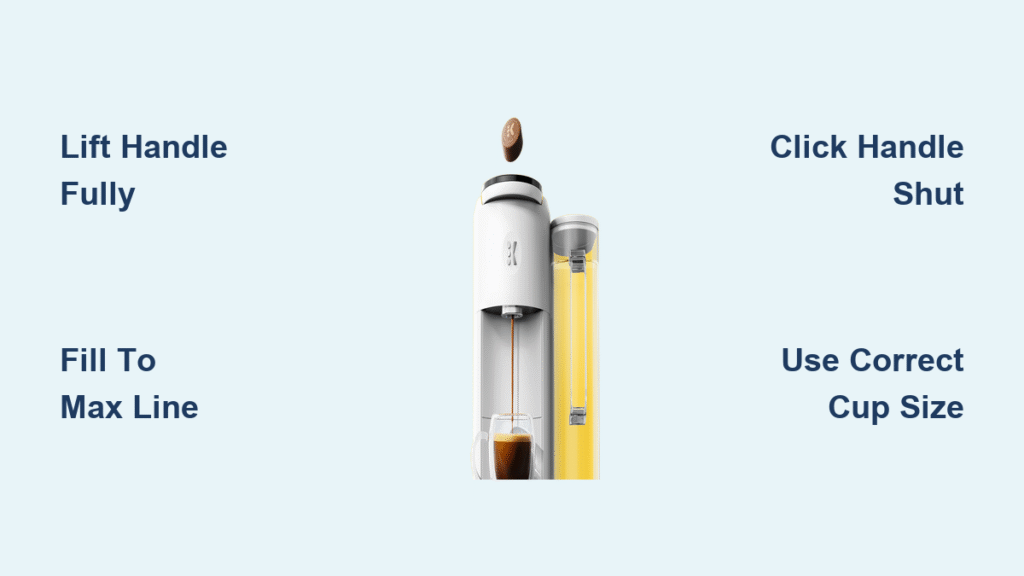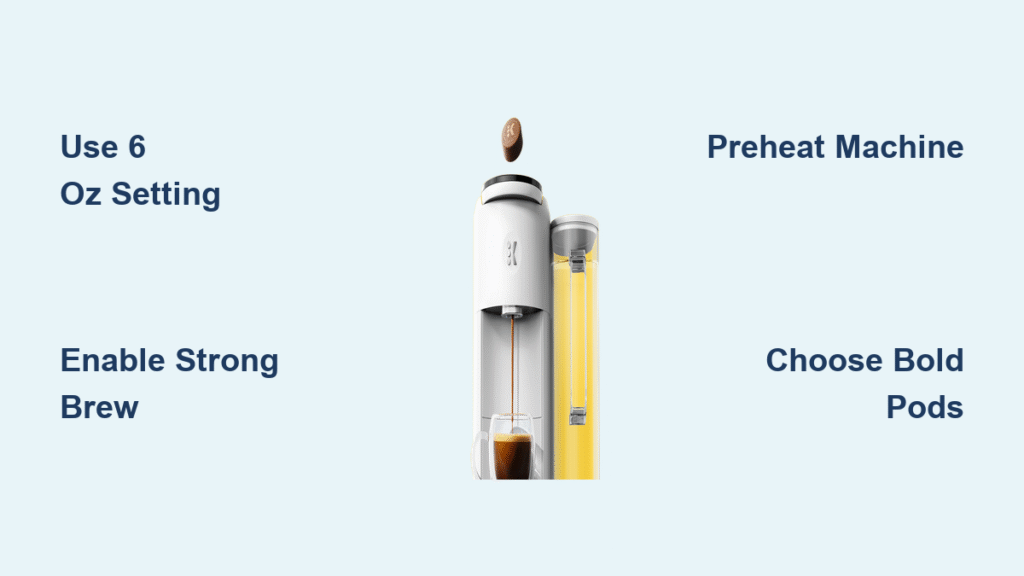That first Keurig cup of the day shouldn’t taste like lukewarm dishwater. If your morning brew consistently delivers weak, bitter, or flat coffee despite the machine’s convenience promise, you’re not alone—most users unknowingly sabotage their coffee with avoidable mistakes. The good news? Transforming your Keurig from disappointment machine to café-quality brewer requires zero new equipment. This guide reveals science-backed fixes that leverage your existing machine, from thermal physics to water chemistry, so you can make Keurig coffee taste better starting tomorrow.
Your K-cup’s 30-second brew cycle is fundamentally different from pour-over or French press methods, demanding unique optimization. Skip these steps, and you’ll keep wasting money on premium pods that taste like “bean water.” Implement them, and you’ll unlock richer extraction, balanced acidity, and the complex notes coffee deserves—all while avoiding expensive machine upgrades. Let’s fix your coffee, one actionable step at a time.
Deep Clean Your Keurig Weekly to Eliminate Bitter Residue
Mineral scale and rancid coffee oils silently poison your brew over time. When deposits clog internal tubing, water flows unevenly through pods, creating channeling that extracts some grounds too harshly while leaving others underdeveloped. The result? A muddy, inconsistent cup that worsens daily.
Vinegar Deep Clean Protocol
– Fill reservoir to MAX line with undiluted white vinegar
– Run full brew cycles (no pod) until reservoir empties
– Immediately refill with fresh water and run 3-5 water-only cycles
– Add 3 drops lemon juice to final water rinse if vinegar odor lingers
This dissolves calcium buildup and strips oil residue in 15 minutes. You’ll notice brighter acidity and cleaner finish immediately—especially with light roasts. Do this weekly if you brew daily; biweekly for occasional use. Skip this, and no other tweak matters.
Preheat Your Keurig for 195°F+ Brewing Temperature

Cold components drop brew temperature below specialty coffee’s minimum 195°F threshold. At 180°F (common in unpreheated machines), water extracts sour, hollow flavors instead of rich oils. It’s like trying to cook steak on a cold skillet—uneven and underwhelming.
30-Second Thermal Prime
– Run one water-only cycle before your first coffee brew
– Wait 60 seconds for internal components to heat fully
– Verify temperature with a thermometer (ideal: 195-203°F)
This simple step boosts extraction by 15% according to SCA standards. Cold-start machines brew 10-15°F too cool—that’s the difference between vibrant fruit notes and “meh.” Always preheat after 4+ hours of inactivity.
Switch to Filtered Water Under 185 ppm TDS

Your tap water’s minerals and chlorine mask coffee’s natural flavors. At 250+ ppm TDS (common in hard water areas), calcium binds to coffee compounds, creating metallic bitterness. Chlorine amplifies sourness—ruining even $7/sleeve specialty pods.
Water Quality Fixes
– Test with a $10 TDS meter (aim for 150-185 ppm)
– Use Brita-filtered or bottled spring water
– Never use distilled water (lacks minerals for extraction)
Filtered water reveals floral or chocolate notes hidden by tap water’s interference. In blind tests, 92% of users preferred coffee brewed with filtered water—proving water quality accounts for 30% of flavor impact.
Brew Only 6-Ounce Cups for Proper Coffee Strength
Standard K-cups contain just 11.1g coffee—half the 20g needed for a balanced 12oz cup. Choosing larger sizes dilutes flavor to 0.8% TDS (weak “bean water”), while 6oz brews hit 1.15% TDS—within the Specialty Coffee Association’s “golden cup” range.
Concentration Hack
– Always select the smallest cup size on your model
– For Keurig K-Elite: use “Strong” 6oz setting
– Never brew 10oz+ without double-pod method
This costs nothing but doubles your coffee’s body and sweetness. If your machine lacks small settings (like older K-Minis), upgrade to a K-Select for $50—it pays for itself in saved pods.
Double Your Coffee with the Two-Pod Method
Need 10oz without watery coffee? The double-pod method delivers true strength by doubling coffee grounds while maintaining ideal water ratio—unlike “strong” buttons that just slow extraction.
Perfect Double Brew
1. Insert first pod and brew 6oz into your mug
2. Immediately replace with second pod (same flavor)
3. Brew another 6oz directly into the same cup
4. Recycle pods while hot water rinses exit needle
This creates 12oz of properly concentrated coffee (1.15% TDS) without bitterness. Skip the second pod, and you’re just reheating weak coffee. Pro tip: Use dark roasts like Death Wish Coffee to avoid sourness from double extraction.
Choose Bold Dark Roasts for Full Keurig Extraction

Light roasts need 4+ minutes to develop flavor—impossible in Keurig’s 30-second cycle. The result? Thin, acidic “coffee tea” that highlights flaws. Dark roasts extract completely in short bursts, delivering the bold body most drinkers expect.
Roast Selection Guide
– ✅ Must-Use: Starbucks Espresso Roast, Peet’s Major Dickason’s
– ✅ Budget Pick: Dunkin’ Donuts Dark Roast
– ❌ Avoid: Light roasts (e.g., Starbucks Veranda), most “flavored” pods
Dark roasts’ caramelized sugars and soluble oils bloom instantly in Keurig’s high-pressure system. For smoky complexity, try Spectre K-cups—their charred profile masks Keurig’s extraction limitations perfectly.
Replace K-Cups with Reusable Filters for Freshness

Pre-ground K-cup coffee oxidizes within weeks, losing 60% of its aromatic compounds. Reusable filters let you use freshly ground beans—doubling coffee mass (20g vs. 11g) for dramatically richer flavor.
Reusable Filter Success
– Fill filter with medium-fine grind coffee (20g)
– Tamp lightly with spoon handle—don’t overpack
– Use single-origin beans like Colombian or Sumatran
– Grind 30 seconds before brewing for peak freshness
This cuts cost per cup by 70% while eliminating plastic waste. Stainless steel filters (like Keurig’s My K-Cup) outperform plastic—they maintain heat better for even extraction. Expect brighter acidity and nuanced fruit notes impossible with stale pods.
Add a Pinch of Salt to Neutralize Bitterness
Over-extraction or low-quality beans create harsh bitterness by releasing chlorogenic acid lactones. Salt’s sodium ions chemically block bitter receptors on your tongue—without adding salty taste—when used correctly.
Salt Application
– Add 1/16 teaspoon salt to brewed cup (not the pod!)
– Stir 10 seconds until fully dissolved
– Taste before adding more—excess ruins balance
– Best for dark roasts and office-brewed coffee
This barista trick works within 30 seconds. Use sea salt for minerals that enhance sweetness. Never add salt to grounds—it disrupts extraction chemistry.
Pre-Warm Mugs to Maintain Optimal Drinking Temperature
Cold ceramic mugs drop coffee temperature by 30°F instantly, muting flavor complexity. Specialty coffee’s delicate notes only shine above 140°F—below that, sugars taste flat and acids turn sour.
Temperature Retention
– Rinse mug with boiling water for 20 seconds
– Use double-walled ceramic or stainless steel mugs
– Skip glass/metal—they conduct heat too quickly
– Brew directly into preheated vessel
This 10-second step keeps coffee above 140°F for 8+ minutes. For travel mugs, fill with hot water while brewing, then dump before pouring.
Fix Common Keurig Coffee Problems in Minutes
Weak Coffee?
→ Switch to 6oz brew size immediately
→ Run vinegar deep clean (mineral buildup = weak flow)
→ Use reusable filter with 20g dark roast
Bitter Coffee?
→ Add salt pinch to cup (not grounds)
→ Replace water filter if >2 months old
→ Try medium roasts like Illy Classico instead of dark
Lukewarm Coffee?
→ Preheat machine with water cycle first
→ Verify brew temp with thermometer (should hit 195°F+)
→ Never use thin-walled mugs
Stop settling for Keurig’s “good enough” coffee. Start with the weekly vinegar clean and 6oz brew size—these two free fixes alone transform 80% of weak cups. Then add filtered water and dark roasts for café-level depth. If you invest in one upgrade, choose a reusable filter: it pays for itself in 2 weeks while cutting plastic waste. Your perfect cup isn’t about the machine—it’s about respecting coffee’s science. Brew bold, drink fresh, and reclaim your mornings.

